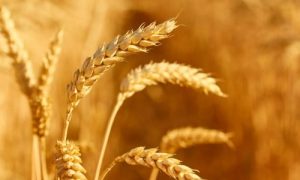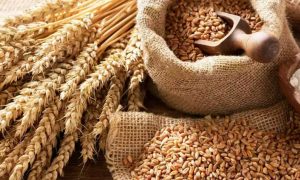Wheat genome sequencing of landraces project nearly complete

The Wheat Diversity Project, led by the IWGSC, is sequencing the genomes of 12 wheat landraces to address challenges like climate change and food security. Funded by the U.S. National Science Foundation, the project aims to expand wheat’s genetic pool, enhance resilience, and improve breeding. It also promotes scientific literacy and offers internships for minority students.
Atwo-year project to sequence the genes of 12 different landraces will give wheat researchers new tools to address developing demands for wheat, including climate change, population growth, and natural resource sustainability, according to project researchers.
The project, called the “Wheat Diversity Project,” is being led by the International Wheat Genome Sequencing Consortium (IWGSC). The project is being funded by the U.S. National Science Foundation (NSF) to mine untapped genetic resources for wheat improvement by sequencing the genomes of ancient varieties representing the worldwide diversity of bread wheat.
The IWGSC and collaborators in France will sequence 12 landrace genomes and update the IWGSC Chinese Spring reference sequence, which is the primary genome reference for bread wheat research.
“We have been sequencing a number of different landraces and have completed eight with three more almost completed,” said Kellye Eversole, IWGSC executive director. “The main issue that this addresses is the dwindling genetic pool in regard to wheat. When you look at the entire gene pool that is being used, of the 94 percent of Asian landraces, only seven percent are being included in modern cultivars.”
Landraces are wheat varieties adapted to local environmental conditions and management practices. They were traditionally farmed across Northern Africa, Europe, and Asia for thousands of years until their replacement by modern agriculture’s cultivars with higher yields and farming qualities. This resulted in a substantial reduction of genetic diversity in cultivated wheat, according to the Consortium.
“Landraces are reservoirs of key agronomic and adaptive traits for crop improvement,” the IWGSC noted. “They are genetically very diverse and contain genes associated with disease resistance, grain-traits, nitrogen-use efficiency, and tolerance to environmental stresses such as drought, heat, and salt, as well as genes coding for proteins involved in flour quality and dietary sensitivity.”
Wheat, one of the most cultivated and consumed crops worldwide, is a key food security crop, providing about 20 percent of dietary calories and proteins.
“The genome sequencing of 12 strategically selected landraces will provide a crucial step forward in worldwide efforts to improve wheat by identifying the genomic diversity that underlies adaptive traits,” explained Joshua Stein, IWGSC wheat diversity project manager. “This will allow for the development of hardier and improved wheat varieties to meet future demands of climate change, population growth, and sustainability of natural resources.”
To make these resources immediately applicable to advance wheat breeding, Robin Buell at the University of Georgia College of Agricultural and Environmental Sciences will develop a practical haplotype graph – a powerful tool that can be used for both genomics and breeding research to accelerate future innovations. The graph will be publicly available and accessible to the entire wheat community via the IWGSC Data Repository and the USDA data repository GrainGenes.
Additionally, the Wheat Diversity Project team will conduct education and outreach activities in the U.S. to raise public scientific literacy by engaging in urban after-school programs, training educators and providing paid summer internships for minority students.
Eversole said she is encouraged by the progress the project has made, as well as the potential for advances in wheat breeding in the future to adapt to environmental changes.
“It is such a great time to be in agriculture research because of the tools available, not just the genomics or genetics, but people are finally paying attention to context,” she said. “Where the plant will be planted is in a distinct biome. The tendency today is to look at national efforts, but when drawn down to a particular region, applying the efforts can be a nightmare. Context matters. This project recognizes that fact and will bring new tools to wheat researchers and developers.”
To read more about the news about the Wheat News continue reading Agriinsite.com

















